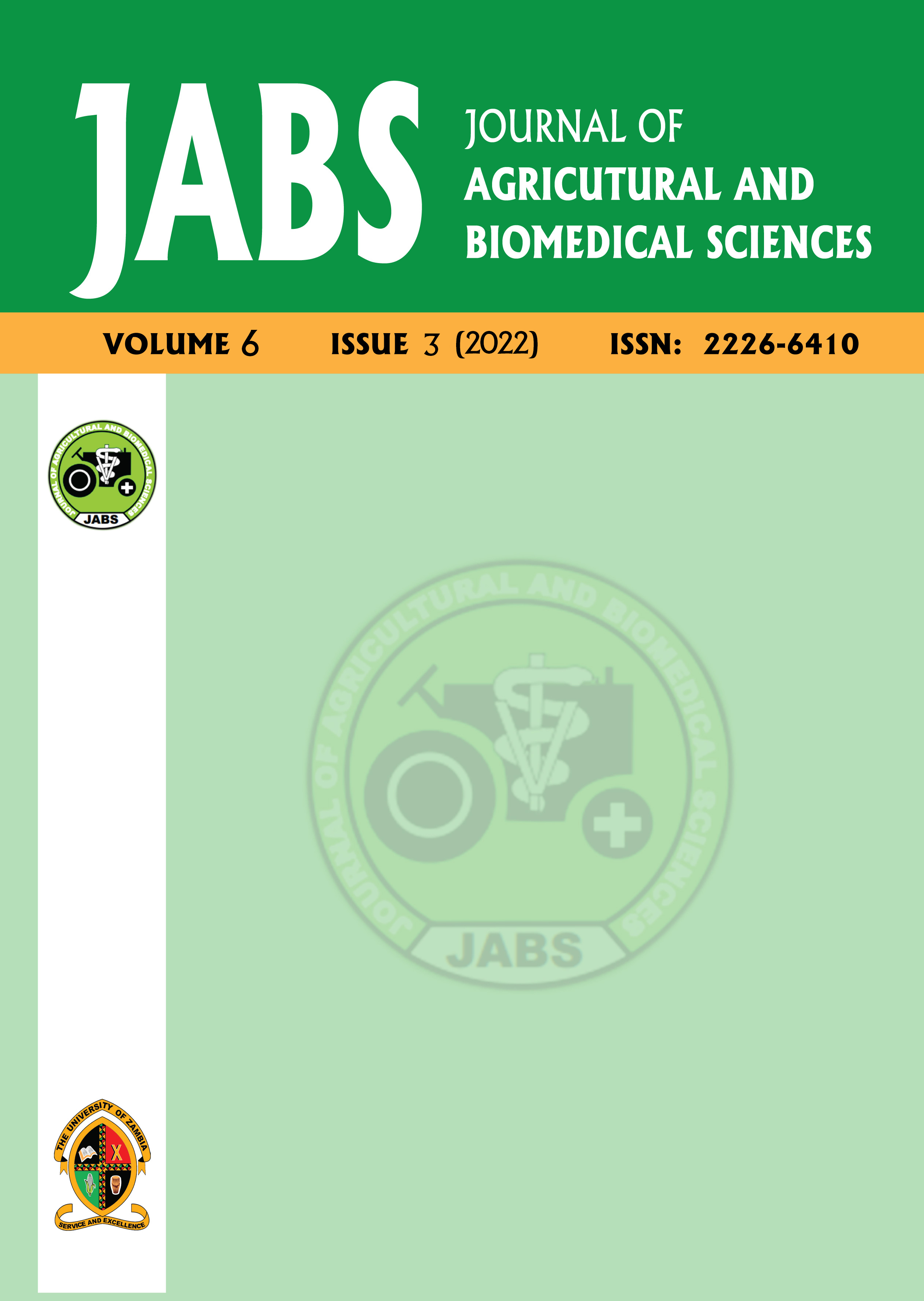Effect of graded levels of Sorghum bicolor on proximate composition, lipid oxidation, microbial load and sensory properties of rabbit meat floss
Abstract
Introduction: Consumers are increasingly seeking healthier and more sustainable meat products. Rabbit meat is generally seen as a healthier alternative to red meat because of its low fat and cholesterol content. However, people accustomed to consuming red meat may find it less visually appealing because of its pale appearance. Plants rich in beneficial phytochemicals like Sorghum bicolor (Sorghum) have been used to impart desirable colouration and sensory properties to processed foods. Materials and Methods: In this study, Rabbit Meat Floss (RMF) was prepared with graded levels of powdered sorghum stalks thus: Treatment 1/Control (RMF+0% Sorghum), Treatment 2 (RMF+1%Sorghum), Treatment 3 (RMF+2%Sorghum) and Treatment 4 (RMF+1%Sorghum). The RMF were analysed for Yield (%), Microbial load (logCFU/g), Lipid oxidation (mgMDA/kg), Proximate composition (%), and Sensory properties at intervals of 0, 10, and 20 days. The RMF analysed on days 10 and 20 were packed in Ziploc bags and kept at room temperature. Experimental design was completely randomised design, and all analyses were done in triplicates. Results: All treatments with Sorghum inclusion had higher yields than the Control, with Treatment 3 (RMF+2%Sorghum) having the highest yield (107.98). All RMF with Sorghum had higher crude protein than control. Treatment 2 (RMF+1%Sorghum) had the highest crude protein at days 0 (50.67) and 20 (47.85). Ash content was also higher in RMF with sorghum, and Treatment 4(RMF+1%Sorghum) had the highest values at days 0 (9.00) and 20 (8.49). At day 0, Treatment 3 (RMF+2%Sorghum) was rated highest in tenderness (7.00) while Treatment 2 (RMF+1%Sorghum) was rated highest in juiciness, and Treatment 4 (RMF+2%Sorghum) rated highest in colour (8.10). At day 20, all RMF with sorghum had higher colour scores, with Treatment 4 (RMF+3%Sorghum) having the highest score (8.10). Conclusion: Inclusion of Sorghum bicolor in rabbit meat floss significantly improved its crude protein and ash content. It also improved visual appeal, while overall acceptability was not severely comprised up to 20 days of storage.
Published
2023-06-01
How to Cite
1.
Adediran O. Effect of graded levels of Sorghum bicolor on proximate composition, lipid oxidation, microbial load and sensory properties of rabbit meat floss. Journal of Agricultural and Biomedical Sciences [Internet]. 1Jun.2023 [cited 9Mar.2025];6(3). Available from: https://nscme.unza.zm/index.php/JABS/article/view/977
Section
Agriculture Sciences
Copyright: ©️ JABS. Articles in this journal are distributed under the terms of the Creative Commons Attribution License Creative Commons Attribution License (CC BY), which permits unrestricted use, distribution, and reproduction in any medium, provided the original author and source are credited.

